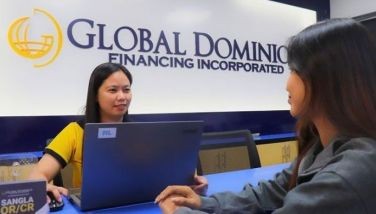The coffee dreamers

I just met a newly married couple in their late 20s, who asked to be briefed about coffee farming. They fortunately have access to a lot of land in high elevations that may be perfect for coffee. And they have a dream of owning a coffee farm, maybe also put up a processing center and later have their own coffee shop. With wistful eyes they listened intently as we described how coffee grows and what it takes to make it marketable and sustainable.
We always entertain young people who inquire about farming coffee because they could be our hope for the future of Philippine coffee. With our demand ever increasing year on year, it just bodes well for the younger generation to think about coffee in a more practical sense – how to plant their own supply. The only solution to our lack of production is to produce more and it does not take just overnight to plant and then harvest the fruits. Coffee can take three to five years if you plant seedlings that come from seeds, not cuttings. Though cuttings can take a shorter time to grow, the trees may not stay productive for as long as those that grow from seeds.
I admire the younger people who think about farming or agriculture, a field which has been sadly abandoned by the children of farmers who instead chose to earn money as OFWs abroad. This new breed of landowners, Indigenous Peoples (IPs) of recent generations and others who by fate have inherited land are now thinking of coffee because they drink the brew. Coffee is more interesting to the young because they can relate to the plant and the drink. “I love coffee,” he tells me as his wife says, “I have already mapped out the farm!” It is this level of interest that makes me want to mentor everyone who dreams of being a farmer or, at least, running a farm.
Last year I met another young man who started farming in Iloilo. He established a nursery and has started to grow even the Arabica variety on lower elevations. He keeps me posted on how the four varieties of coffee – Robusta, Excelsa, Arabica and Liberica – are growing well in his farm. On lower elevation and with rising temperatures, he lovingly waters them so he can prove that proper care can make even Arabica (Catimor) grow on this level and in this warmer clime. Coffee usually can just be rainfed and hardly needs care except for cleaning the farm and regular pruning of trees. But with climate change being felt everywhere, one needs to help Mother Nature by manual irrigation.
Over in the Cordillera, we have two young men, Daniel Maches and Ricky Lacbongan, who belong to the Lias tribe in the town of Barlig, Mountain Province. I met them during the pandemic and they have since joined our Plant Coffee Pilipinas program by planting Arabica trees on their ancestral land.They have geotagged the trees and they send us periodic reports on how their coffee trees are doing. I wish they could influence other youth in their community to look at their ancestral lands and use them for coffee, too.
In Nueva Vizcaya, a second generation coffee enthusiast is Jude Morales, who helps his mother Juliet plant more than 17,000 new coffee trees in Kasibu. He may have been descended from the Bugkalot tribe, has lived in Australia but decided to come back to carry on the family coffee trade.
We met a local government executive and provincial board member, 23-year-old Amin Hataman, who started a youth movement in Isabela City, Basilan to plant more than a thousand coffee trees to put Basilan back on the coffee map of the country. I was witness to his leadership and “roll up your sleeves” attitude to encourage the young people to take up coffee farming instead of just hanging out and playing games.
This is the new generation of coffee farmers. If in the 70s many Manileños went to Mindanao to grow bananas and pineapple, today these young people are looking at coffee. And they are dreaming of having their own plantations to supply Manila’s coffee shops which have mushroomed overnight in almost every street corner.
I am happy that we will be turning over the industry to a generation of dreamers, a generation of doers – who not only roast and drink this popular brew, but will make sure we have many more coffee trees to harvest from.
For those who are coffee drinkers but are not able to plant their own trees, we have partnered with the country’s biggest mobile app called GForest, under GCash, where your energy points can be converted to trees that our group will plant for you. Check out the choices of trees – mangrove, coconut and, of course, coffee! You can plant a tree virtually, and we make it a reality by having implementors plant the trees – more than 250,000 trees to date. If your company wishes to plant your own set of trees in someone else’s land, GCash can make it happen, too. We then “geotag” the trees to make sure we can track the data of their carbon capture. Now, that is using technology to count our progress in cooling the planet.
We know we need millions of trees, but starting with a few thousands is a good start. And planting the right tree is also key. We discourage planting of invasive species and only promote native trees like Narra, Dao, Yakal, among others. It has become easier to help cool the planet and look forward to slightly cooler summers by making sure we have planted a tree, somewhere, somehow. Whether it is via GCash, or by physically planting one or two ourselves, imagine 100 million able-bodied citizens doing that.
Coffee may just save the day – and the planet.
- Latest
- Trending


























